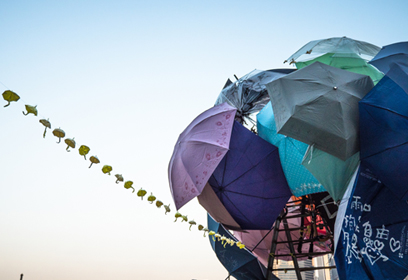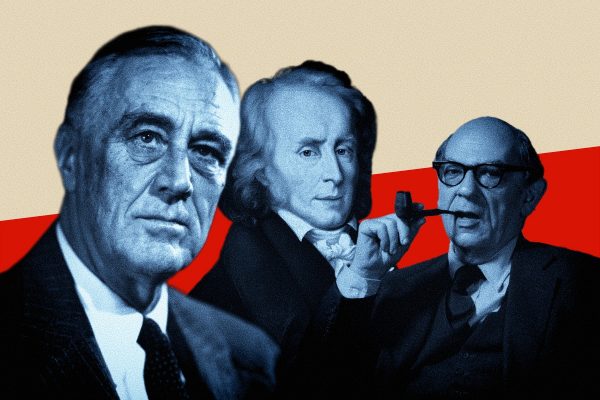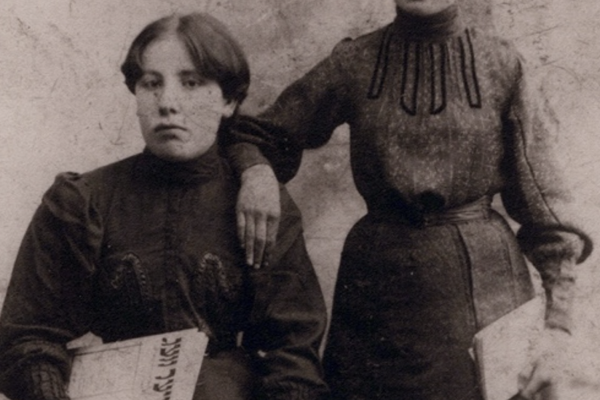On December 11, 2014, police in Hong Kong cleared the sites where for seventy-five days, one of the largest peaceful protest movements in recent world history had taken place.
For over a year, Hong Kong activists had openly planned a large-scale civil-disobedience movement, called “Occupy Central with Love and Peace,” to demand universal suffrage in the election in 2017. The original plan was to occupy the Central Business District of Hong Kong.
However, when the movement was finally launched following the arrest of student leaders in the demonstration on September 26, protesters did not occupy Central as planned. After the police force fired tear gas eighty-seven times at the unarmed crowd, enraged citizens went on the streets and occupied Mong Kok, Admiralty and Causeway Bay instead. The movement quickly transformed itself into the Umbrella Movement and the younger generation, especially students, became its face and backbone. Eighteen-year-old Joshua Wong became an instant icon of the movement.
Protesters left the site vowing that “It’s just the beginning” and “We’ll be back.” A battle had been lost, but hope had not. These words must be taken seriously. The Umbrella Movement marks the political awakening of Hong Kong’s younger generation.
The Umbrella Movement was clearly a young people’s movement. A recent survey from the Chinese University of Hong Kong finds that young people are the biggest group of supporters of the Umbrella Movement. Sixty-eight percent of the 15-24 age group and 36.9 percent of the 25–39 group expressed support for the movement, compared with 27.6 percent of the 40-59 age group and 22.1 percent of those aged sixty and above.
The influence of the younger generation has been rising for some time. When Scholarism was founded in May 2011 to combat the Moral and National Education Curriculum Guide, it was an organization of secondary school students. The 2012 anti-national-education protest, led by Scholarism and then sixteen-year-old Joshua Wong, was the most successful movement in Hong Kong since 2003.
After the Standing Committee of the National People’s Congress in Beijing announced its decision on the Hong Kong electoral reform on August 31, 2014, stating that candidates should earn support from more than half of the members of the nomination committee, Scholarism organized a protest on September 13, before Occupy Central was formally launched on September 28. As more protesters went on the streets to show their support to the students, the leaders—law professor Benny Tai Yiu-ting, sociology professor Chan Kin-man, and Reverend Chu Yiu-ming, known as “three gentlemen of Occupy Central”—were forced to announce the launch of the movement. Thereafter, the three gentlemen took a supporting role and most major decisions during the movement were made and announced by Scholarism and the tertiary student organization Hong Kong Federation of Students. The only public dialogue with Hong Kong government officials during the movement was initiated by student leaders.
Although Scholarism and the Federation of Students became the leading organizations, they did not and could not control the movement. Citizens who joined the protests did not need to be led. Once the occupation started, the occupied sites became tantamount to a public stage. They appeared frequently on global television networks and web sites, and citizens knew how and where to join.
The Umbrella Movement distinguishes itself from recent protest waves by projecting a highly “civil” image. The slogan of “Peaceful, Rational, Non-violent and No-swearing,” or PRNN, quickly caught on. Although radical protesters tried to escalate the movement, others managed to maintain order and prevented the protest from becoming violent. During the Flag-raising Ceremony on the National Day, protesters formed a human wall to block radicals from interrupting the ceremony. At a later stage, when masked protesters broke into the Legislative Council, Scholarism immediately condemned the act as “irresponsible.”
Protesters studiously cultivated the occupied sites as communal spaces of order and civility. They cleaned up the streets everyday, organized waste classification and recycling, created study spaces, and supplied female bathrooms with skin-care products. At one point, some protesters started to eat hotpot and play ping-pong at the occupied sites, but were soon stopped by fellow protesters because they were seen as disrespectful. Protesters also tried their best to care for local communities, talking with local residents, writing stories about them, and encouraging people to support their businesses.
Even the student-initiated dialogue with Hong Kong government officials on October 21, 2014 was conducted in a painstakingly civil manner in sharp contrast to the militant unruliness of Tiananmen student leaders in their televised dialogue with then Chinese premier Li Peng on May 18, 1989.
High visibility also encouraged the Umbrella Movement to turn the occupied sites into outdoor exhibitions. Art installations were everywhere: the Lennon Wall made of colorful post-it notes full of supporting words, the 3.6-meter-tall “Umbrella Man” made of wood blocks, and the "Umbrella Patchwork" created from over 100 discarded umbrellas. Tents and streets were covered with satirical posters using images of Hong Kong officials and Chinese President Xi Jinping.
They also incorporated digital media technologies. “Stand by you,” a web site created for collecting supporting words from all over the world, projected the messages onto an LED screen at the main occupied site. Most news and decisions from the protesters were first published through public pages on Facebook. Student leaders used social media platforms to provide timely updates and keep the decision process transparent. To make sure that news reports about the movement were accurate, journalism students from the University of Hong Kong initiated HK Verified, a crowdsourcing news page, to collect and verify information about the movement through Google Doc.
The Umbrella Movement Visual Archives & Research Collective used Google Maps and Street View to record the art works and their geo-locations. Citizens recorded police violence on social media. When protesters were arrested, they were advised to immediately send a pre-edited text message to legal aid organizations for assistance.
The Umbrella Movement cannot be separated from the robust protest culture that has emerged in Hong Kong since the sovereignty over Hong Kong was returned to China in 1997.
A rally of half a million protesters on July 1, 2003 forced the Hong Kong government to put off a national security legislation that would have inserted anti-sedition and anti-subversion stipulations into Hong Kong’s Basic Law. A mass protest on July 1, 2004 led to the resignation of then Chief Executive Chee-hwa Tung. The July 1 rally has since become a tradition for citizens to express their dissatisfaction towards the Hong Kong SAR and the central government in Beijing. Indeed, a slogan of the 2003 protest, “Return rule to the people,” expressed the same political demand as the Umbrella Movement.
Another protest tradition is the annual Victoria Park candlelight vigil in commemoration of the tragedy of the Tiananmen protests in 1989. Every year since 1990, this memorial tradition has attracted large numbers of participants, but the number of participants has risen significantly in the past five or six years, averaging from about 150,000 to 200,000 since 2009.
The choice of tactics, especially the emphasis on civility, reflected protesters’ concerns about political repression, a lesson of the Tiananmen protests of 1989. Yet civility is also Hong Kongers’ way of distinguishing themselves from mainlanders, who are often seen as crude and uncivil. Indeed, the Umbrella Movement reflects the growing identity anxieties of Hong Kong residents vis-à-vis mainland Chinese. According to a survey from the Chinese University of Hong Kong, in 2014, only 8.9% of Hong Kong citizens identify themselves as solely "Chinese," the lowest figure since the 1997 Handover. More surprisingly, 68.8% respondents primarily identify themselves as "Hong Konger," the highest since 1996. Many Hong Kong citizens blame mainland Chinese for competing for their limited resources and jobs. There is a strong feeling that economic cooperation with mainland China benefits only Hong Kong’s upper class. The influx of mainland tourists favors luxury brands at the expense of small local businesses, causing rent, housing, and consumer prices to skyrocket. There are also concerns that such policies may lead to an unhealthy economic structure that relies too much on the mainland. Politically, Hong Kong residents are increasingly worried about a more interventionist central government in its Hong Kong policies.
What did the Umbrella Movement accomplish? Leaders in Beijing and Hong Kong have not budged and the movement seems to have ended without achieving concrete policy outcomes. Yet perhaps one of its main accomplishments was the public mobilization itself. The scale and duration of the mobilization demonstrated Hong Kong people’s passion for political freedom and their determination to take action. And despite the schism between its supporters and opponents, the Umbrella Movement created a new sense of solidarity among Hong Kongers. For many young people, the experience of being part of such a large-scale movement was transformative. By giving the younger generation a deeply collective political experience, the movement turned the cohort into a political generation. This new political generation, the “umbrella generation,” may have an important role in shaping the political future of Hong Kong and mainland China.








